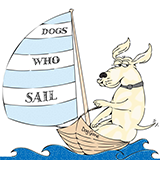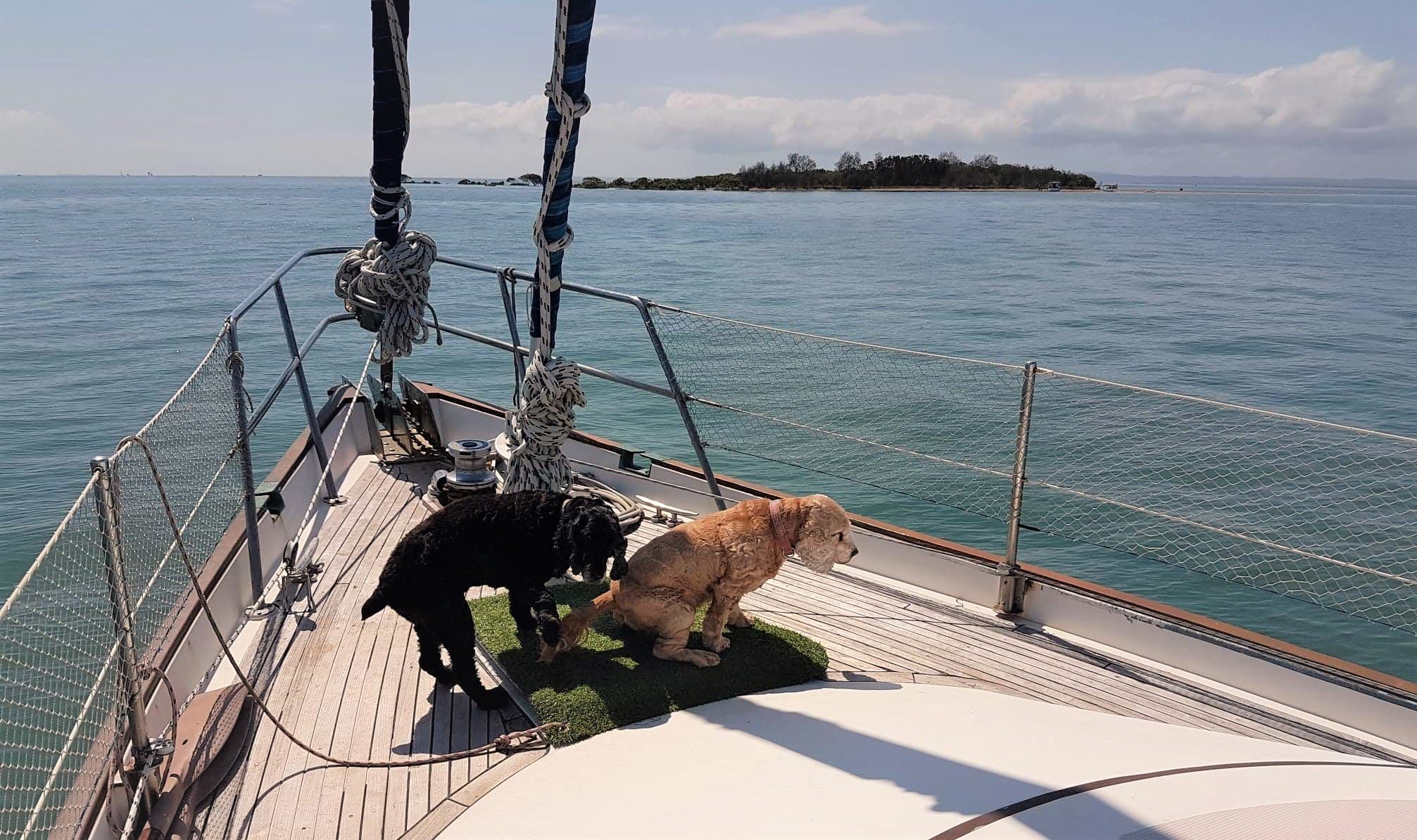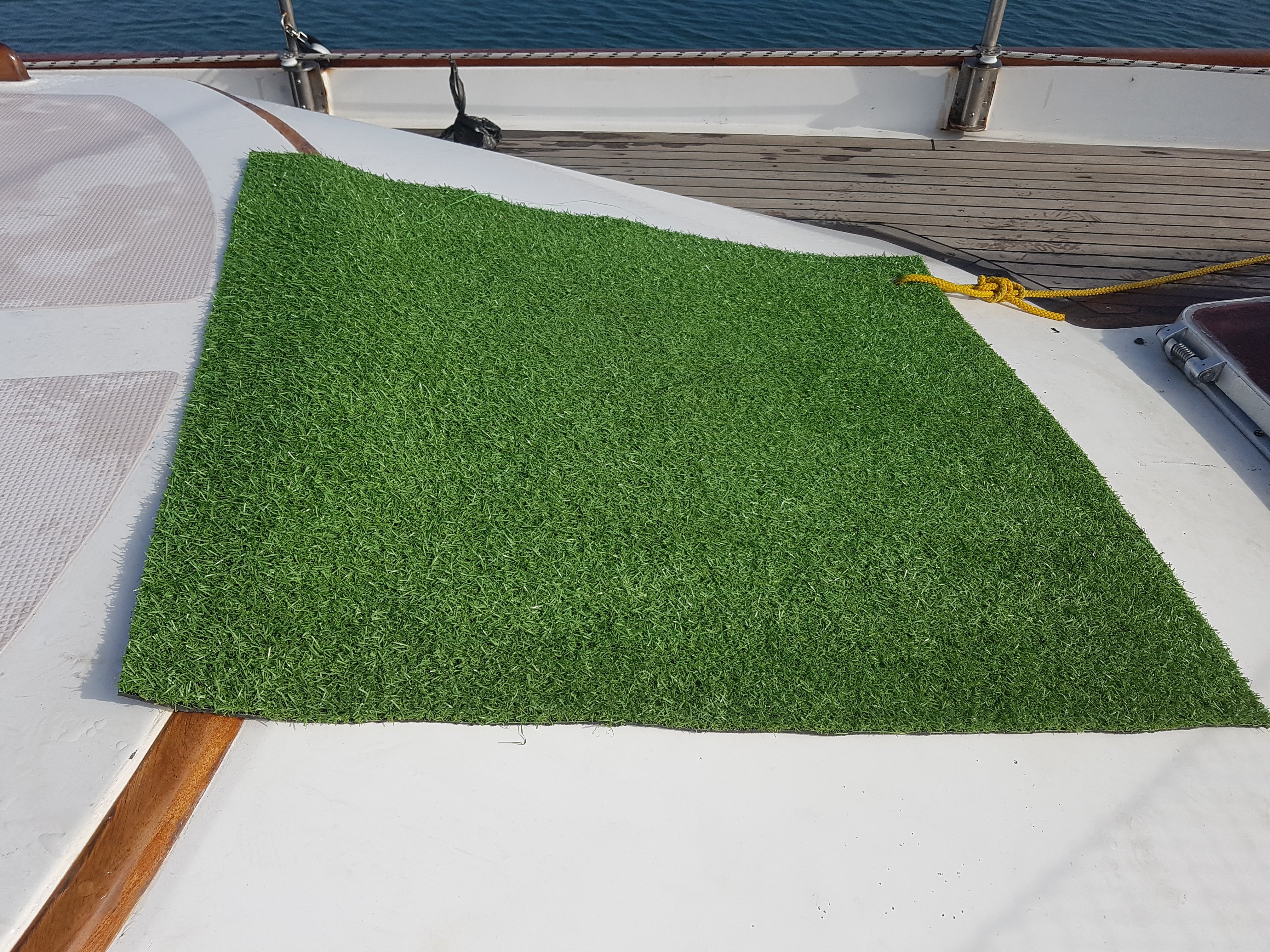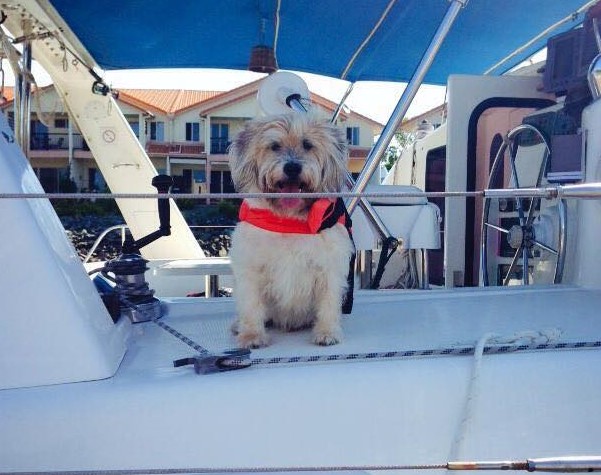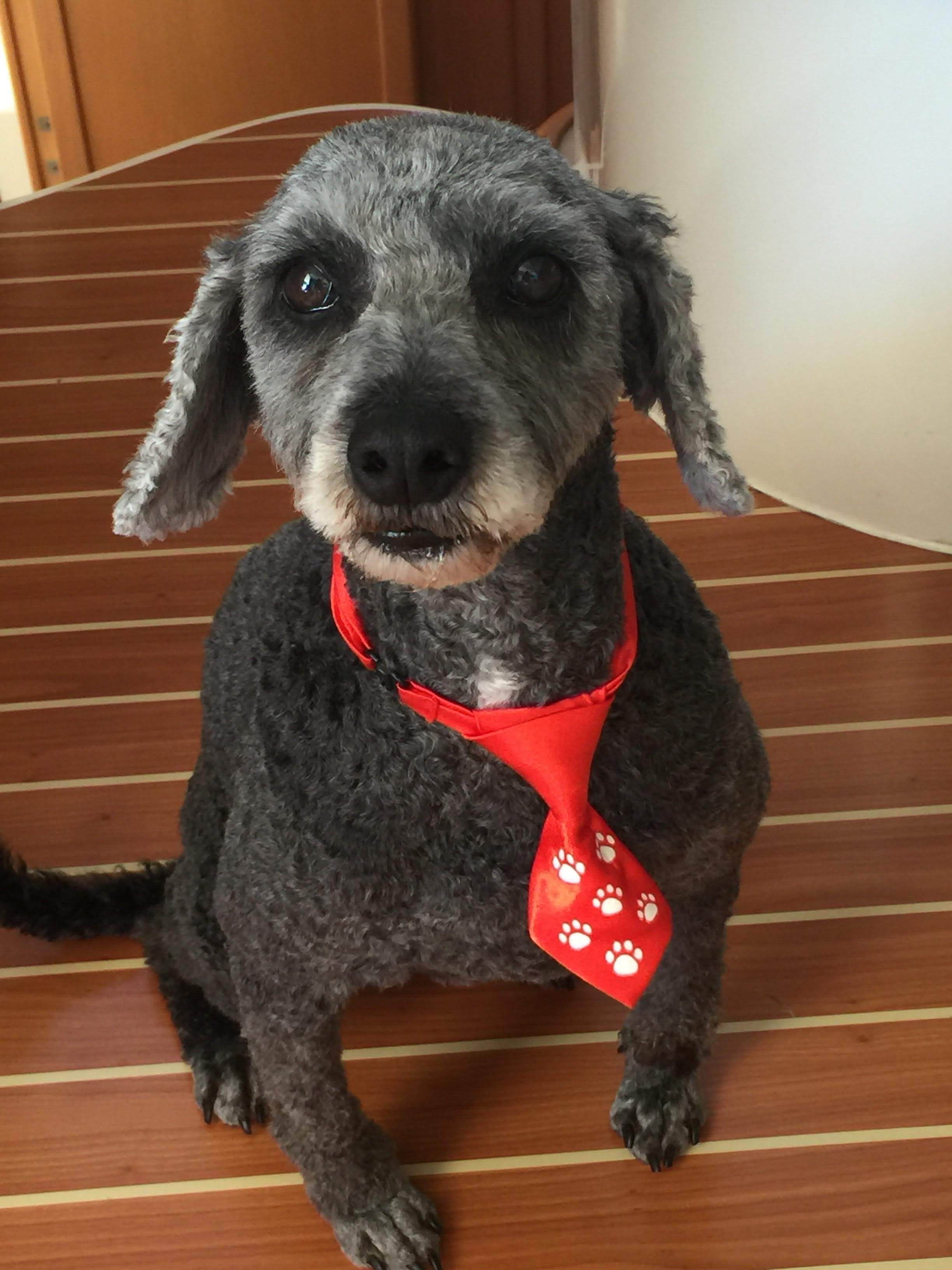
Lady’s bio offers a very interesting read for those considering circumnavigation.
Doggy Name: Lady
Doggy Breed: Cocker Spaniel
Doggy Age: 10 years old
Years Sailing: 6 years
Places Sailed:
1) The Mediterranean: eg Cyprus, Greece, Italy, Spain, Gibraltar, etc.
2) East Atlantic: Tenerife (the Canary Islands)
3) The Caribbean: eg Trinidad, St. Lucia, Martinique,Guadeloupe, Dominica, St. Vincent, Kitts & Nevis, Grenada, Spanish Virgin Islands, British Virgin Islands, US Virgin Islands, St. John, Montserrat, St.Martin, St. Thomas, Puerto Rico, Domincan Republic, Culebra, Bonaire, Curacao, Columbia, Venezuela, Panama.
4) The Pacific: Galapagos, French Polynesia (eg Fatu Hiva,Hiva Oa, Pape’ete, Mo’orea, Raiatea, Ta’aha, Bora Bora, Moto Auira), Cook Islands, Niue, Tonga, Samoa, Wallis and Futuna, Fiji, Vanuatu, New Caledonia, New Zealand, Australia.

How does Lady handle sailing life? She feels happy and safe when she’s with us so living on a boat is no different from being a landlubber! She took to sailing easily.
Biggest challenge: Quarantine in New Zealand – one month in a kennel in which she was very stressed. Expensive.
How did you overcome/manage these challenges?
New Zealand’s Ministry for Primary Industries has an informative website with a step-by-step guide on importation of a pet.
Most dog friendly places you’ve experienced on your travels in your local area and abroad?
Unfortunately, they are all rather dog-unfriendly when it comes to importing a dog. The locals are friendly everywhere.
Any tips on international travels?
I would not recommend sailing around the world with a dog unless you’re prepared to take your dog ashore in countries where foreign dogs are prohibited. If you’re not prepared to take this risk then your dog will have to stay onboard almost the whole time and this is not fair to the dog. We often swam ashore on deserted islands so Lady could run around and have some fun.
Most countries require that the dog is microchipped, vaccinated, treated for parasites, rabies titer test, health certificate, import permit, etc. and this makes sailing with a dog onboard quite difficult and expensive. In many countries they require that your dog has had certain jabs prior to arrival and this is almost impossible to arrange.
These days most countries have strict rules about dogs and cats on visiting boats.

What’s the longest leg Lady has travelled and how do you manage her energy, toileting and behaviour on these legs and keeping her safe on larger swells?
Three weeks. [We] used a harness, toileting on the foredeck or sidedeck depending on swell and wind. A dog cannot run around on a passage so he/she must be trained to stay in the cockpit.
Have you made any modifications on your boat to accommodate Lady? No. [We] bought a small dogbox which was wedged between the cockpit seat and the pedestal [which faced] aft to stay dry.
What advice would you like to share with others who have dogs who sail or who are considering having a dog on a boat?
3 Do’s:
1.Do take your dog on a short cruise if you had the dog prior to buying the boat.
2. Do train the dog to toilet on the foredeck if you plan on longer passages, otherwise the dog will suffer.
3. Do keep the dog outside. Most boats have staircases that are much too steep for a dog. It can destroy the joints in the forelimb.
3 Don’ts:
1.Do not take a dog on a circumnavigation.
2. Do not take a big dog (eg husky, labrador) on an extended cruise.
3. Do not keep the dog inside the boat where it will skid around during passages and destroy the cabin sole varnish, upholstery, etc.

Finally, last thoughts (from your dogs perspective):
Most fun was chasing pelicans and seagulls on the foredeck!
